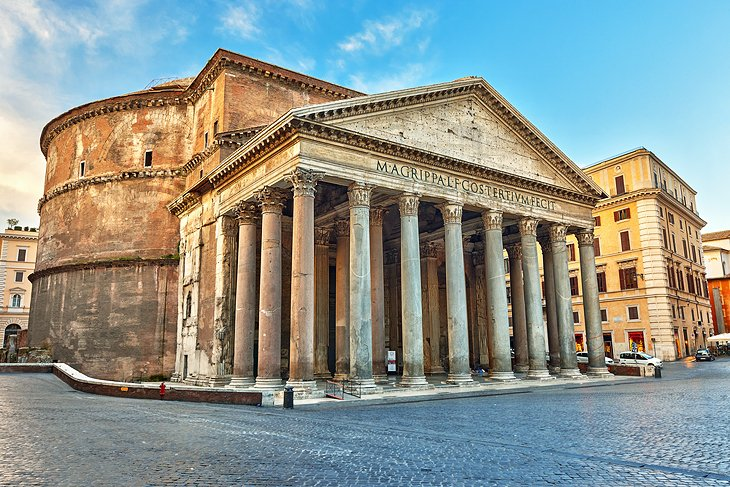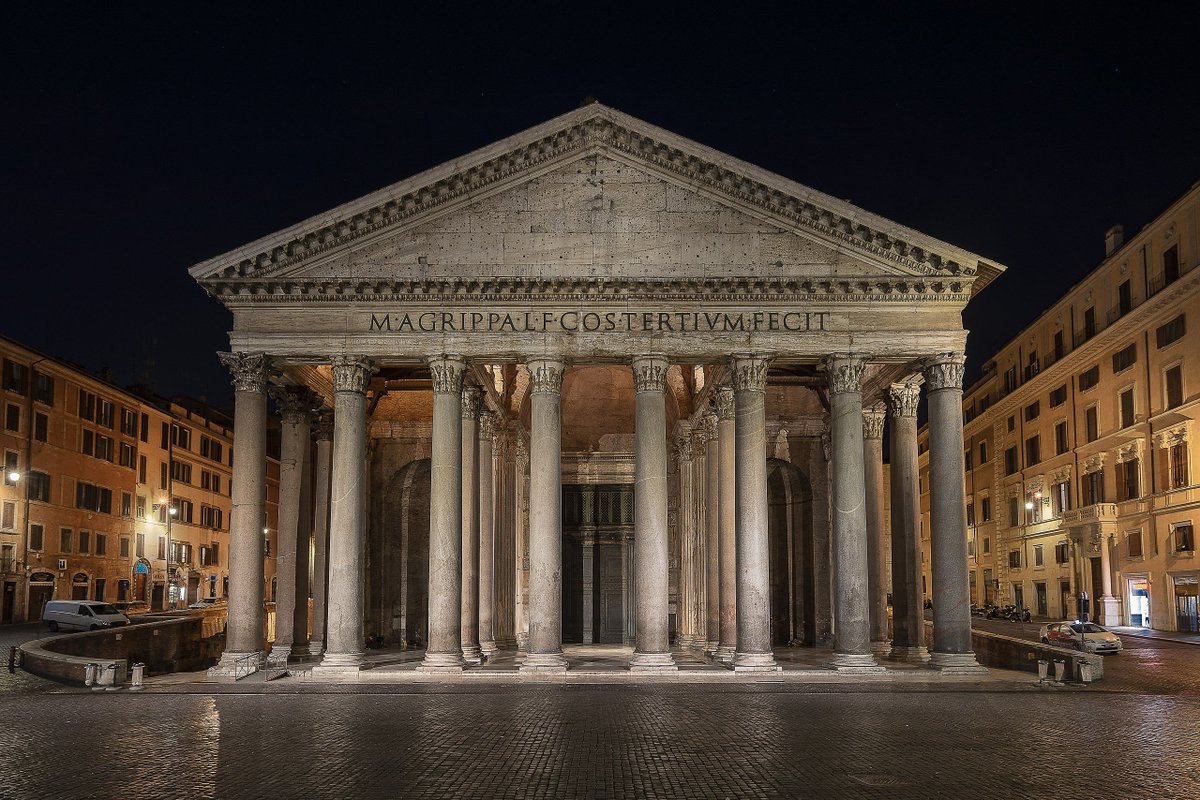
#RomanSiteSaturday - The Pantheon🏛️
(1/8) Located in #Rome, Italy, the Pantheon is arguably the best surviving example of Imperial #Roman architecture. Richly decorated with Corinthian columns and a variety of coloured marble, it is truly a remarkable site.
#History #Classics
(1/8) Located in #Rome, Italy, the Pantheon is arguably the best surviving example of Imperial #Roman architecture. Richly decorated with Corinthian columns and a variety of coloured marble, it is truly a remarkable site.
#History #Classics

(2/8) Originally constructed during the reign of the emperor Augustus under the patronage of Marcus Agrippa, the current temple is actually a reconstruction undertaken by Trajan and Hadrian following an earthquake. Finished in 126CE, the original inscription was retained: 

(3/8) "M·AGRIPPA·L·F·COS·TERTIVM·FECIT"
"M[arcus] Agrippa L[ucii] f[ilius] co[n]s[ul] tertium fecit"
"Marcus Agrippa, son of Lucius, made [this building] when consul for the third time."
"M[arcus] Agrippa L[ucii] f[ilius] co[n]s[ul] tertium fecit"
"Marcus Agrippa, son of Lucius, made [this building] when consul for the third time."

(4/8) The Pantheon is an incredible feet of engineering. Its most significant feature is the freestanding concrete tufa dome, which for 1,300 years was the largest in the world. To this day, its dome remains the largest unsupported concrete dome in the world. 







(5/8) A former Roman temple, the Pantheon derives its name from the Ancient #Greek "Πάνθειον" (Pantheion), meaning "of, relating to, or common to all the gods". Its original purpose is unknown. Whilst its name indicates a religious function, no ancient sources can confirm this. 

(6/8) In 609 CE, the Pantheon was converted into a church, thus allowing it to survive the Medieval period relatively unscathed. However, the exterior of the Pantheon, originally clad in exquisite Pentelic marble, was quarried over the centuries for church building in Rome. 



(7/8) Throughout the #Medieval and #Renaissance periods, additions were made to the interior of the Pantheon. The remains of significant Italian figures, like the artist Raphael and the first Italian king Victor Emmanuel II, now reside within the rotunda. 







(8/8) The importance and influence of the Pantheon on architecture throughout the world cannot be understated. Emulated across the globe from America to China, this iconic and irreplaceable Roman building has shaped architectural approaches from the Renaissance and beyond. 



There is so, so much more to be said about this wonder of the ancient world. For more information, we recommend "Rome - An Oxford Archaeological Guide" by Amanda Claridge.
#Classics #Rome #Pantheon #Architecture #AncientRome #History #Religion #Art
#Classics #Rome #Pantheon #Architecture #AncientRome #History #Religion #Art
@threadreaderapp unroll please!
• • •
Missing some Tweet in this thread? You can try to
force a refresh































